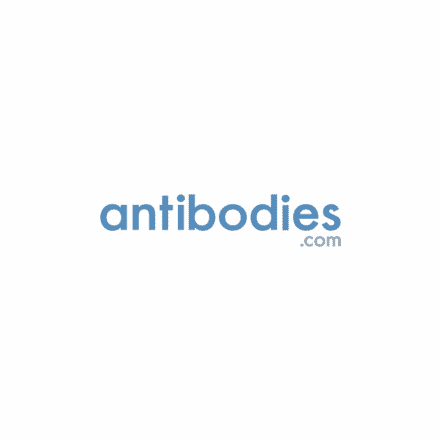+1 (314) 370-6046 or
Contact Us - Argentina
- Australia
- Austria
- Bahrain
- Belgium
- Brazil
- Bulgaria
- Cameroon
- Canada
- Chile
- China
- Colombia
- Croatia
- Cyprus
- Czech Republic
- Denmark
- Ecuador
- Egypt
- Estonia
- Finland
- France
- Germany
- Greece
- Hong Kong
- Hungary
- Iceland
- India
- Indonesia
- Iran
- Ireland
- Israel
- Italy
- Japan
- Kazakhstan
- Kuwait
- Latvia
- Lithuania
- Luxembourg
- Macedonia
- Malaysia
- Malta
- Mexico
- Monaco
- Morocco
- Netherlands
- New Zealand
- Nigeria
- Norway
- Peru
- Philippines
- Poland
- Portugal
- Qatar
- Romania
- Russia
- Saudi Arabia
- Serbia
- Singapore
- Slovakia
- Slovenia
- South Africa
- South Korea
- Spain
- Sri Lanka
- Sweden
- Switzerland
- Taiwan
- Thailand
- Turkey
- Ukraine
- UAE
- United Kingdom
- United States
- Venezuela
- Vietnam

![Immunohistochemistry - Anti-Osteopontin Antibody [OSP/4589] - BSA and Azide free (A253214) - Antibodies.com](https://cdn.antibodies.com/image/catalog/253/A253215_1.jpg?profile=product_search)
![Immunofluorescence - Anti-HSP60 Antibody [LK2] - BSA and Azide free (A252064) - Antibodies.com](https://cdn.antibodies.com/image/catalog/252/A252065_1.jpg?profile=product_search)
![Immunohistochemistry - Anti-alpha Smooth Muscle Actin Antibody [1A4] - BSA and Azide free (A253074) - Antibodies.com](https://cdn.antibodies.com/image/catalog/253/A253074_1.jpg?profile=product_search)
![Immunohistochemistry - Anti-HSP60 Antibody [LK1] - BSA and Azide free (A252063) - Antibodies.com](https://cdn.antibodies.com/image/catalog/252/A252063_1.jpg?profile=product_search)
![Immunohistochemistry - Anti-HSP60 Antibody [HSPD1/780] - BSA and Azide free (A252067) - Antibodies.com](https://cdn.antibodies.com/image/catalog/252/A252067_1.jpg?profile=product_search)
![Immunohistochemistry - Anti-GRP94 Antibody [9G10.F8.2] - BSA and Azide free (A253389) - Antibodies.com](https://cdn.antibodies.com/image/catalog/253/A253389_1.jpg?profile=product_search)
![Immunohistochemistry - Anti-Cytokeratin 18 Antibody [C-04] - BSA and Azide free (A252382) - Antibodies.com](https://cdn.antibodies.com/image/catalog/252/A252382_1.jpg?profile=product_search)
![Immunofluorescence - Anti-GRP94 Antibody [SPM249] - BSA and Azide free (A253390) - Antibodies.com](https://cdn.antibodies.com/image/catalog/253/A253390_1.jpg?profile=product_search)
![Immunohistochemistry - Anti-Cytokeratin 18 Antibody [KRT18/2819R] - BSA and Azide free (A252386) - Antibodies.com](https://cdn.antibodies.com/image/catalog/252/A252386_1.jpg?profile=product_search)
![Immunohistochemistry - Anti-S100 beta Antibody [S100B/1012] - BSA and Azide free (A253116) - Antibodies.com](https://cdn.antibodies.com/image/catalog/253/A253116_1.jpg?profile=product_search)
![SDS-PAGE - Anti-GRP94 Antibody [HSP90B1/3168R] - BSA and Azide free (A253388) - Antibodies.com](https://cdn.antibodies.com/image/catalog/253/A253388_1.jpg?profile=product_search)
![Immunohistochemistry - Anti-HSP60 Antibody [SPM253] - BSA and Azide free (A252064) - Antibodies.com](https://cdn.antibodies.com/image/catalog/252/A252064_1.jpg?profile=product_search)
![Immunohistochemistry - Anti-Neurofilament Heavy Polypeptide Antibody [NF421] - BSA and Azide free (A252667) - Antibodies.com](https://cdn.antibodies.com/image/catalog/252/A252667_1.jpg?profile=product_search)

![Immunohistochemistry - Anti-Vinculin Antibody [VCL/3617] - BSA and Azide free (A253471) - Antibodies.com](https://cdn.antibodies.com/image/catalog/253/A253471_1.jpg?profile=product_search)
![Immunohistochemistry - Anti-Myelin Basic Protein Antibody [MBP/4273] - BSA and Azide free (A252466) - Antibodies.com](https://cdn.antibodies.com/image/catalog/252/A252466_1.jpg?profile=product_search)
![Immunohistochemistry - Anti-Cytokeratin 18 Antibody [rKRT18/1190] - BSA and Azide free (A252373) - Antibodies.com](https://cdn.antibodies.com/image/catalog/252/A252373_1.jpg?profile=product_search)
![Immunohistochemistry - Anti-Vimentin Antibody [VIM/1937R] - BSA and Azide free (A253494) - Antibodies.com](https://cdn.antibodies.com/image/catalog/253/A253494_1.jpg?profile=product_search)
![Immunohistochemistry - Anti-Estrogen Receptor beta 1 Antibody [ERb455] - BSA and Azide free (A251672) - Antibodies.com](https://cdn.antibodies.com/image/catalog/251/A251672_1.jpg?profile=product_search)
![ELISA - Anti-Dxd Antibody [1A12] - BSA and Azide free (A324862) - Antibodies.com](https://cdn.antibodies.com/image/catalog/324/A324862_1.jpg?profile=product_search)
![Immunohistochemistry - Anti-Calprotectin Antibody [MAC387] - BSA and Azide free (A253104) - Antibodies.com](https://cdn.antibodies.com/image/catalog/253/A253105_1.jpg?profile=product_search)
![Immunohistochemistry - Anti-alpha Smooth Muscle Actin Antibody [SPM332] - BSA and Azide free (A253075) - Antibodies.com](https://cdn.antibodies.com/image/catalog/253/A253075_1.jpg?profile=product_search)
![Immunohistochemistry - Anti-beta 2 Microglobulin Antibody [B2M/961] - BSA and Azide free (A252932) - Antibodies.com](https://cdn.antibodies.com/image/catalog/252/A252932_1.jpg?profile=product_search)
![Immunohistochemistry - Anti-pan Cytokeratin Antibody [C11] - BSA and Azide free (A254053) - Antibodies.com](https://cdn.antibodies.com/image/catalog/254/A254053_1.jpg?profile=product_search)
![Immunohistochemistry - Anti-HSP60 Antibody [rGROEL/780] - BSA and Azide free (A252069) - Antibodies.com](https://cdn.antibodies.com/image/catalog/252/A252069_1.jpg?profile=product_search)
![Immunohistochemistry - Anti-CD3 epsilon Antibody [PC3/188A] - BSA and Azide free (A253672) - Antibodies.com](https://cdn.antibodies.com/image/catalog/253/A253673_1.jpg?profile=product_search)
![Immunohistochemistry - Anti-CD20 Antibody [L26] - BSA and Azide free (A253774) - Antibodies.com](https://cdn.antibodies.com/image/catalog/253/A253774_1.jpg?profile=product_search)
![Immunohistochemistry - Anti-Neurofilament Heavy Polypeptide Antibody [NE14] - BSA and Azide free (A252671) - Antibodies.com](https://cdn.antibodies.com/image/catalog/252/A252671_1.jpg?profile=product_search)
![Immunohistochemistry - Anti-Histone H1 Antibody [HH1/957] - BSA and Azide free (A251985) - Antibodies.com](https://cdn.antibodies.com/image/catalog/251/A251985_1.jpg?profile=product_search)
![Immunohistochemistry - Anti-p27 KIP 1 Antibody [KIP1/769] - BSA and Azide free (A251279) - Antibodies.com](https://cdn.antibodies.com/image/catalog/251/A251279_1.jpg?profile=product_search)
![Western Blot - Anti-GFAP Antibody [GA-5] - BSA and Azide free (A251887) - Antibodies.com](https://cdn.antibodies.com/image/catalog/251/A251887_1.jpg?profile=product_search)
![Immunohistochemistry - Anti-HSP60 Antibody [HSPD1/2206R] - BSA and Azide free (A252073) - Antibodies.com](https://cdn.antibodies.com/image/catalog/252/A252073_1.jpg?profile=product_search)
![Immunohistochemistry - Anti-Cytokeratin 19 Antibody [KRT19/800] - BSA and Azide free (A252394) - Antibodies.com](https://cdn.antibodies.com/image/catalog/252/A252394_1.jpg?profile=product_search)
![Immunohistochemistry - Anti-CD79a Antibody [JCB117 + HM47/A9] - BSA and Azide free (A253965) - Antibodies.com](https://cdn.antibodies.com/image/catalog/253/A253965_1.jpg?profile=product_search)
![Immunohistochemistry - Anti-Cytochrome C Antibody [CYCS/3128R] - BSA and Azide free (A252829) - Antibodies.com](https://cdn.antibodies.com/image/catalog/252/A252829_1.jpg?profile=product_search)
![Immunohistochemistry - Anti-Histone H1 Antibody [1415-1] - BSA and Azide free (A251984) - Antibodies.com](https://cdn.antibodies.com/image/catalog/251/A251984_1.jpg?profile=product_search)
![Immunohistochemistry - Anti-CD31 Antibody [JC/70A] - BSA and Azide free (A252784) - Antibodies.com](https://cdn.antibodies.com/image/catalog/252/A252784_1.jpg?profile=product_search)
![Immunofluorescence - Anti-Human Nuclear Antigen Antibody [235-1] - BSA and Azide free (A254146) - Antibodies.com](https://cdn.antibodies.com/image/catalog/254/A254146_1.jpg?profile=product_search)
![Immunohistochemistry - Anti-Macrophage L1 Protein Antibody [SPM281] - BSA and Azide free (A253105) - Antibodies.com](https://cdn.antibodies.com/image/catalog/253/A253106_1.jpg?profile=product_search)
![Immunohistochemistry - Anti-Cadherin 16 Antibody [CDH16/1071] - BSA and Azide free (A251248) - Antibodies.com](https://cdn.antibodies.com/image/catalog/251/A251248_1.jpg?profile=product_search)
![Immunohistochemistry - Anti-Calprotectin Antibody [rMAC3781] - BSA and Azide free (A253107) - Antibodies.com](https://cdn.antibodies.com/image/catalog/253/A253107_1.jpg?profile=product_search)
![Immunohistochemistry - Anti-HSP27 Antibody [G3.1] - BSA and Azide free (A252052) - Antibodies.com](https://cdn.antibodies.com/image/catalog/252/A252052_1.jpg?profile=product_search)
![Immunohistochemistry - Anti-67kDa Laminin Receptor Antibody [RPSA/2699] - BSA and Azide free (A252404) - Antibodies.com](https://cdn.antibodies.com/image/catalog/252/A252404_1.jpg?profile=product_search)
![Immunohistochemistry - Anti-S100A9 + Calprotectin Antibody [MAC3157R] - BSA and Azide free (A253108) - Antibodies.com](https://cdn.antibodies.com/image/catalog/253/A253108_1.jpg?profile=product_search)
![Immunohistochemistry - Anti-pan Cytokeratin Antibody [KRT/1877R] - BSA and Azide free (A254197) - Antibodies.com](https://cdn.antibodies.com/image/catalog/254/A254197_1.jpg?profile=product_search)
![Immunohistochemistry - Anti-PCNA Antibody [PC10] - BSA and Azide free (A252758) - Antibodies.com](https://cdn.antibodies.com/image/catalog/252/A252758_1.jpg?profile=product_search)
![Western Blot - Anti-Nucleolin Antibody [NCL/902] - BSA and Azide free (A252663) - Antibodies.com](https://cdn.antibodies.com/image/catalog/252/A252663_1.jpg?profile=product_search)
![Immunohistochemistry - Anti-HSP60 Antibody [rHSPD1/6497] - BSA and Azide free (A278482) - Antibodies.com](https://cdn.antibodies.com/image/catalog/278/A278482_1.jpg?profile=product_search)
![Immunohistochemistry - Anti-pan Cytokeratin Antibody [AE-1/AE-3] - BSA and Azide free (A254108) - Antibodies.com](https://cdn.antibodies.com/image/catalog/254/A254108_1.jpg?profile=product_search)
